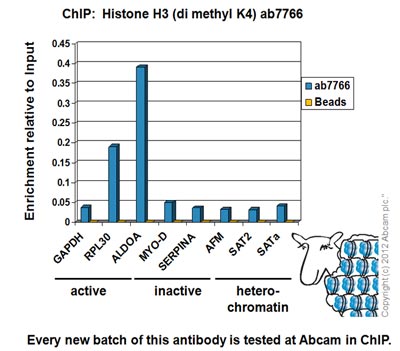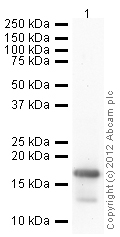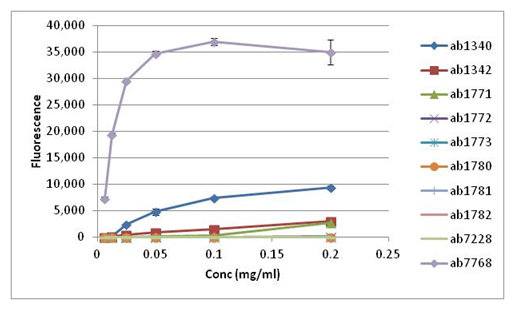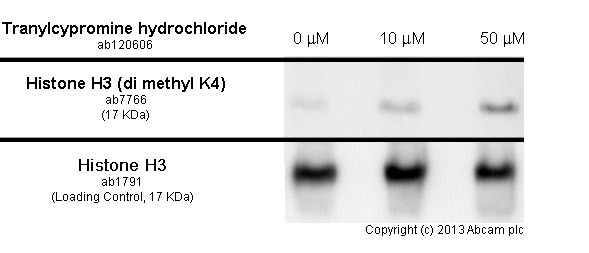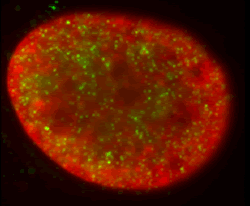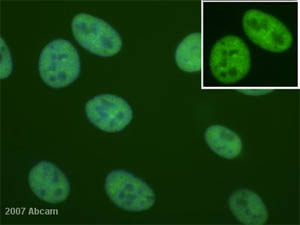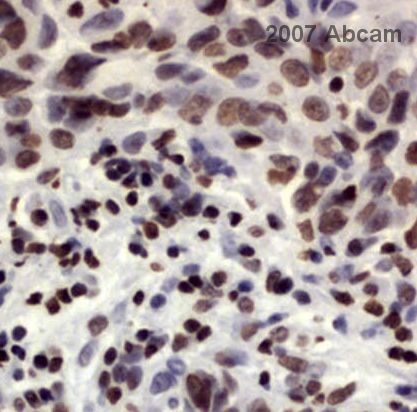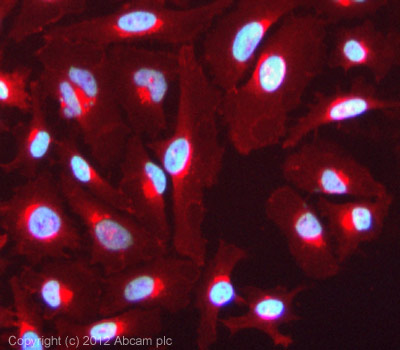Anti-Histone H3 (di methyl K4) antibody - ChIP Grade
| Name | Anti-Histone H3 (di methyl K4) antibody - ChIP Grade |
|---|---|
| Supplier | Abcam |
| Catalog | ab7766 |
| Prices | $403.00 |
| Sizes | 50 µg |
| Host | Rabbit |
| Clonality | Polyclonal |
| Isotype | IgG |
| Applications | ChIP DB WB ChIP ChIP Array IHC-F ICC/IF ICC/IF IHC-P |
| Species Reactivities | Mouse, Human, Pig, Yeast, Drosophila, S. pombe, Plasmodium, Marmoset, Candida, Mammalian |
| Antigen | Synthetic peptide conjugated to KLH derived from within residues 1 - 100 of Human Histone H3, di methylated at K4 |
| Blocking Peptide | Human Histone H3 (di methyl K4) peptide |
| Description | Rabbit Polyclonal |
| Gene | HIST3H3 |
| Conjugate | Unconjugated |
| Supplier Page | Shop |
Product images
Product References
The H3K4 methyltransferase Setd1a is first required at the epiblast stage, - The H3K4 methyltransferase Setd1a is first required at the epiblast stage,
Bledau AS, Schmidt K, Neumann K, Hill U, Ciotta G, Gupta A, Torres DC, Fu J, Kranz A, Stewart AF, Anastassiadis K. Development. 2014 Mar;141(5):1022-35.
Nucleolar organization, ribosomal DNA array stability, and acrocentric chromosome - Nucleolar organization, ribosomal DNA array stability, and acrocentric chromosome
Stimpson KM, Sullivan LL, Kuo ME, Sullivan BA. PLoS One. 2014 Mar 24;9(3):e92432.
A silencer-proximal intronic region is required for sustained CD4 expression in - A silencer-proximal intronic region is required for sustained CD4 expression in
Henson DM, Chou C, Sakurai N, Egawa T. J Immunol. 2014 May 15;192(10):4620-7.
Digital genotyping of macrosatellites and multicopy genes reveals novel - Digital genotyping of macrosatellites and multicopy genes reveals novel
Brahmachary M, Guilmatre A, Quilez J, Hasson D, Borel C, Warburton P, Sharp AJ. PLoS Genet. 2014 Jun 19;10(6):e1004418.
Transcriptional regulation of the albumin gene depends on the removal of histone - Transcriptional regulation of the albumin gene depends on the removal of histone
Liu D, Zempleni J. J Nutr. 2014 Jul;144(7):997-1001.
Vascular histone deacetylation by pharmacological HDAC inhibition. - Vascular histone deacetylation by pharmacological HDAC inhibition.
Rafehi H, Balcerczyk A, Lunke S, Kaspi A, Ziemann M, Kn H, Okabe J, Khurana I, Ooi J, Khan AW, Du XJ, Chang L, Haviv I, Keating ST, Karagiannis TC, El-Osta A. Genome Res. 2014 Aug;24(8):1271-84.
Low activity of LSD1 elicits a pro-inflammatory gene expression profile in - Low activity of LSD1 elicits a pro-inflammatory gene expression profile in
Liu D, Zempleni J. Genes Nutr. 2014 Sep;9(5):422.
A novel small compound SH-2251 suppresses Th2 cell-dependent airway inflammation - A novel small compound SH-2251 suppresses Th2 cell-dependent airway inflammation
Suzuki J, Kuwahara M, Tofukuji S, Imamura M, Kato F, Nakayama T, Ohara O, Yamashita M. PLoS One. 2013 Apr 16;8(4):e61785.
Glucose-independent persistence of PAI-1 gene expression and H3K4 tri-methylation - Glucose-independent persistence of PAI-1 gene expression and H3K4 tri-methylation
Takizawa F, Mizutani S, Ogawa Y, Sawada N. Biochem Biophys Res Commun. 2013 Mar 29;433(1):66-72. doi:
Identification of small molecule inhibitors of Jumonji AT-rich interactive domain - Identification of small molecule inhibitors of Jumonji AT-rich interactive domain
Sayegh J, Cao J, Zou MR, Morales A, Blair LP, Norcia M, Hoyer D, Tackett AJ, Merkel JS, Yan Q. J Biol Chem. 2013 Mar 29;288(13):9408-17.
